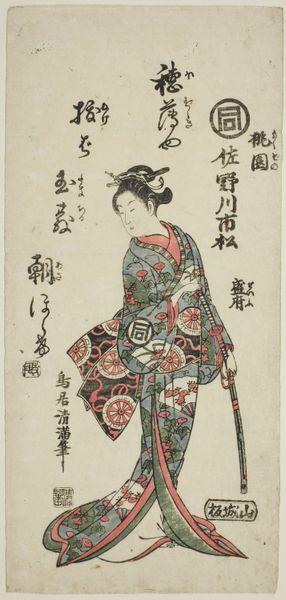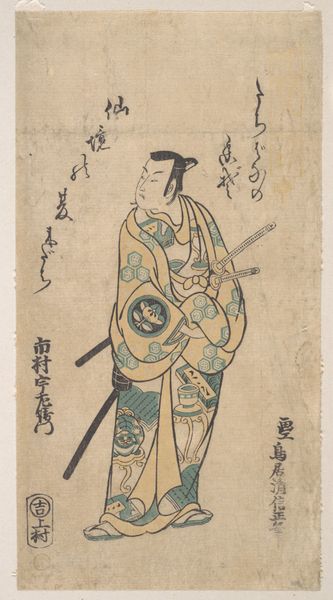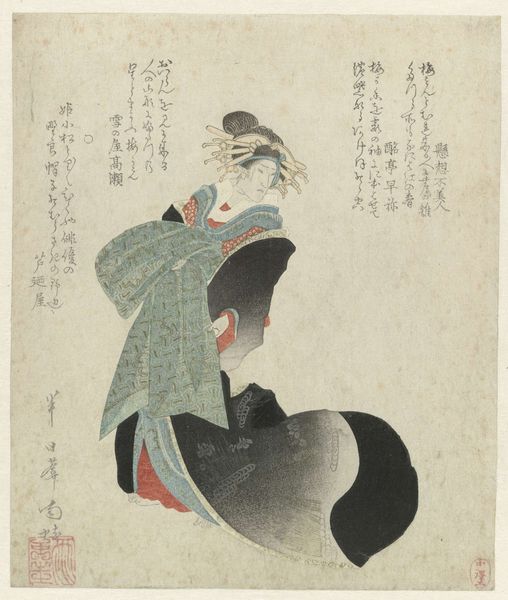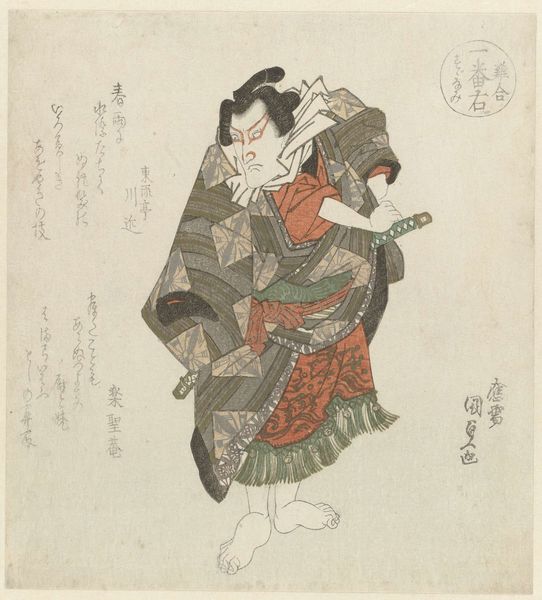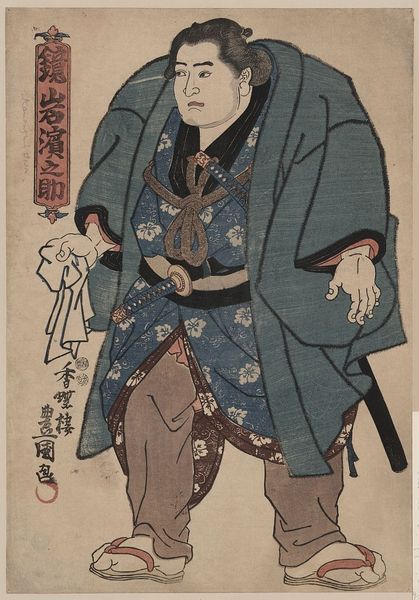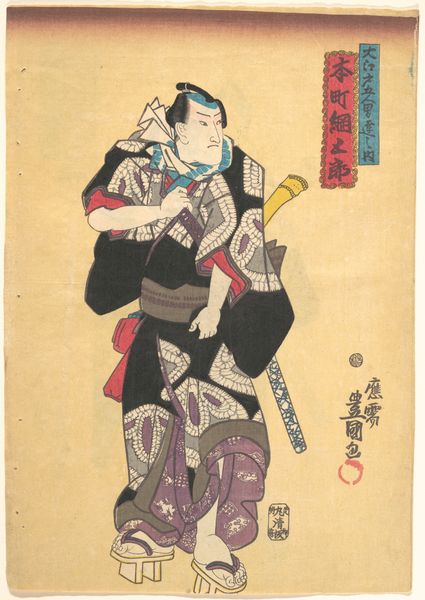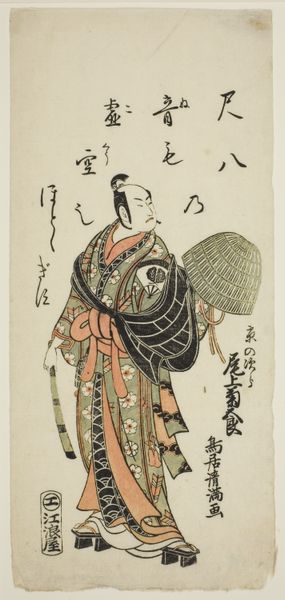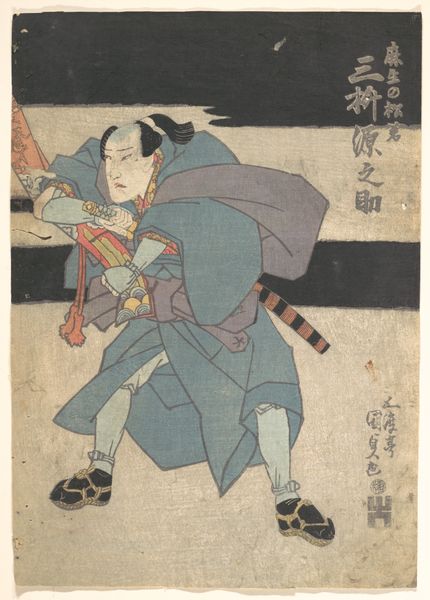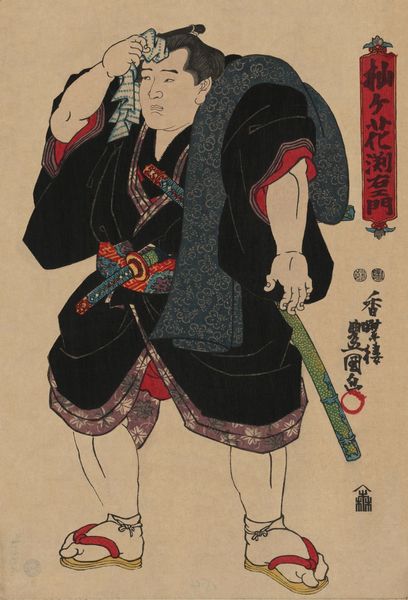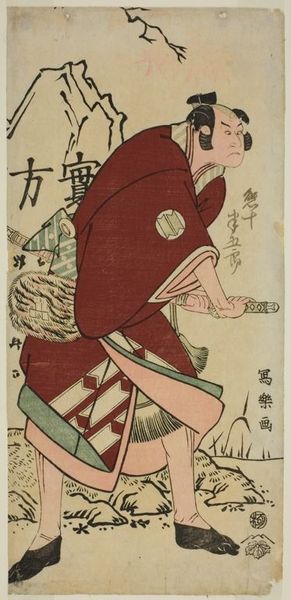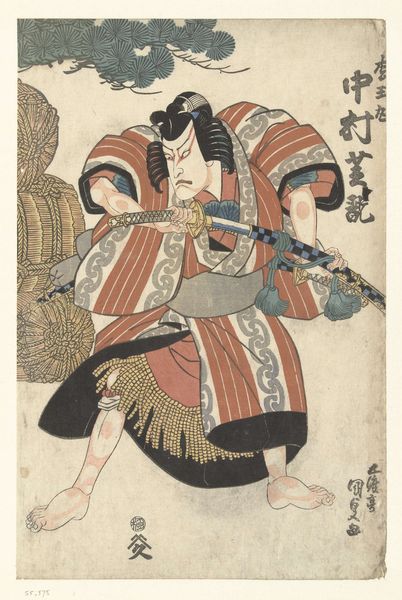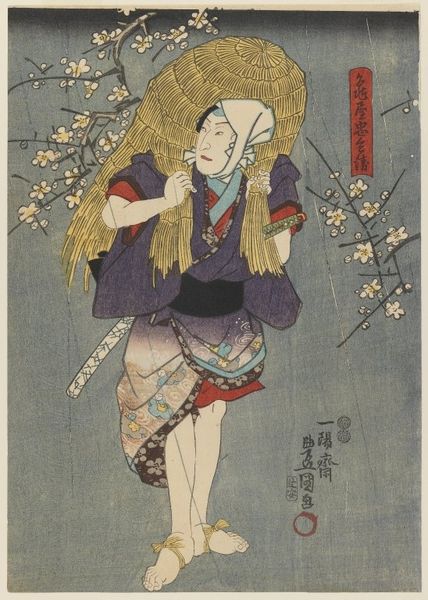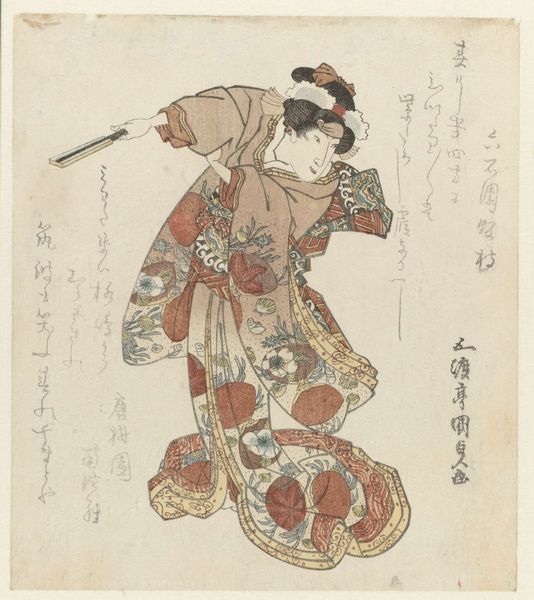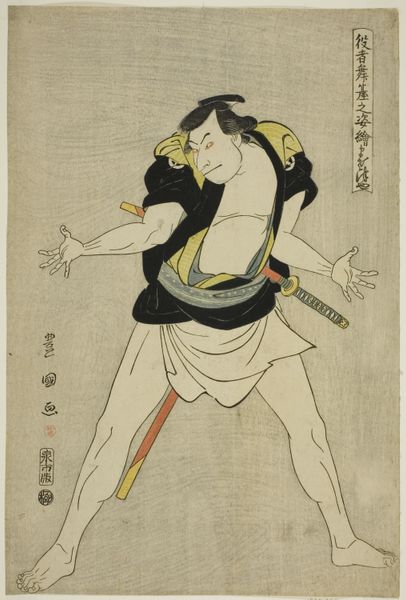
print, woodblock-print
#
portrait
#
narrative-art
# print
#
asian-art
#
ukiyo-e
#
figuration
#
woodblock-print
Dimensions: height 284 mm, width 172 mm
Copyright: Rijks Museum: Open Domain
Editor: Here we have Utagawa Sadamasu II’s 1849 woodblock print, “Danshichi Kurobei, ten voeten uit.” It's striking how the figure seems caught between action and vulnerability. What stands out to you in this piece? Curator: It's fascinating to consider this print through the lens of Edo period social dynamics. Danshichi Kurobei was a popular kabuki character – often portrayed as a conflicted hero, caught between societal expectations and personal loyalty. Utagawa Sadamasu positions him centrally, yet vulnerably, as if he is at once heroic and persecuted, does that read to you too? Editor: Yes, that struggle is really evident. The bare feet and disheveled clothing suggest vulnerability, even as the sword implies strength and defiance. Curator: Precisely! It begs the question of what these visible and opposing qualities represent in Japanese society, specifically class, status and moral conflict, and to think about who benefits and who pays the price within these structures. We must also consider how the representation of male identity, particularly working-class masculinity, is being negotiated here, too. Editor: So it's not just a portrait, but a statement on societal pressures and power dynamics. Curator: Absolutely! Consider also how Kabuki, while popular, existed on the margins of elite culture. Representations of figures like Danshichi allowed for the exploration – and perhaps even the critique – of rigid social roles. And how audiences engaged with stories that reflected their lives. Editor: This really changes how I see the artwork, knowing the kabuki and the audience adds new dimensions to how i see it. It feels very powerful and even a little revolutionary now! Curator: Exactly! Placing art in context always opens new pathways.
Comments
No comments
Be the first to comment and join the conversation on the ultimate creative platform.
